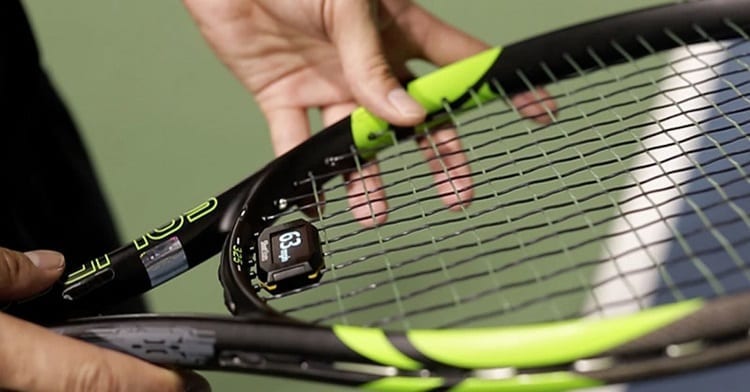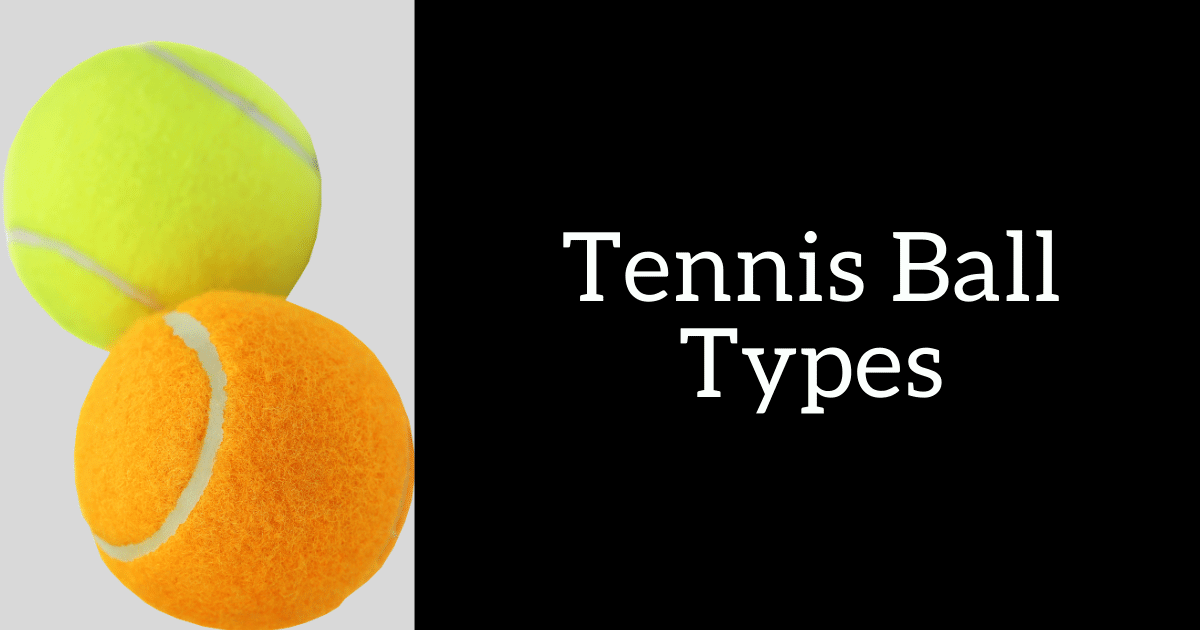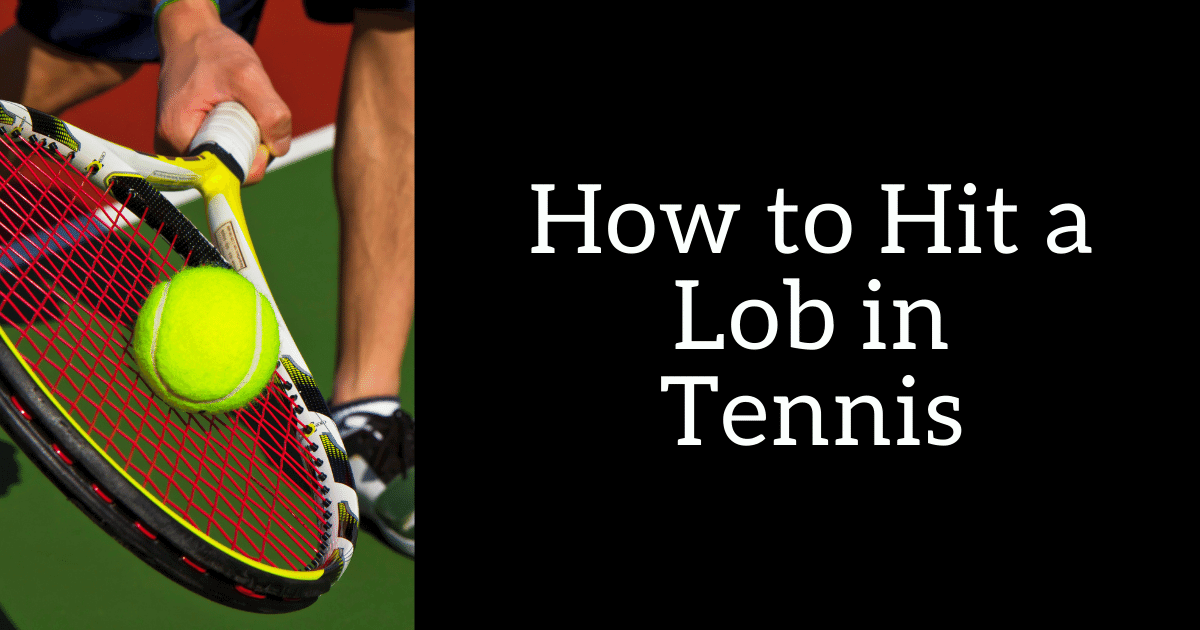Any links on this page that lead to products on Amazon are affiliate links. As an Amazon Associate I earn from qualifying purchases.
In tennis, the type of string you choose and its tension significantly impact your racket’s playability. Since the strings make contact with the ball when you swing, it makes sense that they are an incredibly important piece of equipment.
Deciding on the type of strings you want to play with should be just as big of a decision as is the racket you choose to purchase.
After all, there is no sense spending hundreds of dollars on a high-end racket only to ignore the strings.
How Important Are Your Strings?
The type of string you use and its tension will impact how well you can control the ball and how much power and spin you can generate.
This article will review everything you need to know about one of the most popular string options out there – multifilament tennis strings.
Different Types of Tennis Strings
You can divide tennis strings into two main categories – natural gut strings and synthetic strings.
Natural Gut Tennis Strings
As you may suspect, natural gut string is made from natural materials. They are the oldest type of tennis strings. To this day, natural gut string uses the intestines of cows.
Natural gut strings offer incredible power and hold tension extremely well, but they are very expensive and they do not hold up well in certain types of weather.
They can also fray and degrade quickly, especially if used in wet or humid conditions.
Many players prefer not to use strings made from animal parts due to animal welfare concerns.
Synthetic Gut Tennis Strings
While there will likely always be a market for natural gut strings, synthetic strings are becoming the standard for most tennis players.
Manufacturers have worked to replicate the playability of natural gut strings and developed many synthetic string options.
While manufacturers are constantly releasing new types of tennis strings, synthetic strings break down into the following main subcategories:
- Nylon String
- Synthetic Gut String
- Polyester String
- Kevlar String
- Multifilament String
The different types of tennis racquet string range in quality, as well as price.
While some tennis strings, like tournament nylon, are designed for affordability and typically used to pre-string low-end rackets, others, like the synthetic gut and multifilament strings, are designed to replicate the dynamic properties of natural gut tennis strings.
Among the different types of synthetic strings, one of the best types for mimicking the performance you get with natural gut strings is multifilament tennis strings.
There’s a lot of information in this post, but rather than keep you waiting for it, here’s the list of our pick for the top 3 choices of multifilament strings.
Read through our reviews and find the perfect set of strings to take your tennis game to the next level!
The Best Multifilament Tennis Strings
#1 Head Velocity MLT Multifilament String
- Outstanding spin and control
- Durable
- Won't break the bank
- String movement
No matter how long you have been playing tennis, you have probably come across the HEAD brand.
They produce everything from tennis rackets to footwear and have built a strong reputation for offering high-quality sportswear and equipment at affordable prices.
The Velocity MLT line is their flagship set of multifilament tennis string.
They use a unique blend of ultra-flexible filaments, which offer low vibration and excellent shock absorption. They have outstanding spin and control.
To further enhance your precision, 30 thicker filaments surround the core of the string.
In comparison to other multifilament strings, the Velocity MLT strings are geared towards enhancing control.
For those who want to add power, pace, and spin to their shots and serves, these strings are an excellent choice.
In terms of durability, the Velocity MLT strings stand up well to regular use in all types of weather conditions which is partially due to the fact that HEAD chose to add a unique, low-friction coating to the exterior of the strings.
The filaments are bonded with a PA resin, which is much firmer than the polyurethane resins typically used to hold the filaments together in most multifilament tennis strings.
Overall, this is an excellent option for those looking for an affordable multifilament string that can add plenty of control and power to their game.
As a bonus, the strings are available in a variety of gauges and the following eye-catching color options: blue, pink, yellow, and black.
Technical specifications
- String Gauge Options: 15 (1.40 mm), 16 (1.30 mm), and 17 (1.24 mm)
- Length: 40ft/12m
- Composition: 1,000 filaments and an outer wrapping of 30 thicker filaments
#2 Wilson – NXT Control Multifilament String
- Excellent playability
- Great absorption - especially for those with tennis elbow
- Responsive feel
- Not as durable as other options
Wilson is another one of those brands that will be familiar to tennis players of all skill levels.
For over a century, Wilson Sporting Goods have produced high-quality tennis equipment for beginners, professionals, and every tennis player in between.
Wilson’s NXT Control strings are some of the most comfortable multifilament strings on the market.
To accomplish this, Wilson designed them with alternating bundles of firm polyester filaments and soft nylon fibers.
This unique combination means that NXT Control strings give users excellent control with all types of swings, as well as a comfortable response.
They are excellent strings for those who experience muscle fatigue in their arms during extended play, or for anyone with concerns about tennis elbow and other wrist and arm issues.
The poly filaments do a great job of absorbing excessive vibrations, but they perform much better than a set of fully poly string.
While they make for really comfortable strings, the NXT Control strings will not negatively impact your game.
Using the Wilson NXT Control strings, you can still generate enough power and spin to place the ball where you want it to be.
While comfort was key to the design, Wilson did not lose sight of the importance of performance.
If you are looking for a set of multifilament strings that give you comfort and control, without significantly detracting from the power of your shots, the Wilson NXT Control strings are a perfect option.
Technical specifications
- String Gauge Options: 16 (1.32 mm) only
- Length: 40ft/12.2m
- Composition: A unique blend of Xycro, polyester, and nylon fibers
#3 Tecnifibre – NRG2 17 Multifilament String
- Great balance between control and power
- Soft feel
- Responsive
- Wear out more quickly than other multifilament string options
- Reduced tension retention
The Tecnifibre NRG2 strings are some of the best multifilament strings on the market.
One of the main reasons for their outstanding reputation and popularity is their incredibly comfortable feel and crisp response.
By incorporating 1,120 individual fibers and bonding them with a flexible polyurethane resin, the NRG2 strings are easy on the player but hard on the ball.
Despite the soft and cushioned feeling the player experiences, the strings have a significant amount of swing energy, particularly useful for those with lighter swings who still want to generate power and precision.
Essentially, the NRG2 strings are so well-regarded because they find a balance between comfort, control, touch, and power.
Using these strings, players will find they can generate power and place the ball accurately without experiencing discomfort or fatigue.
Even when strung at higher tensions, these strings are fairly soft on the player’s arm and elbow.
The only reason why these strings did not take our top spot for the best overall multifilament strings is simply due to the fact that they tend to wear more over time.
The strings will loosen as they are used which will impact the amount of control any player will have with their swings.
With that being said, it is a minor issue, as they remain playable for much longer than most synthetic strings.
Overall, these are excellent strings that work well for anyone who is looking for a way to step up their game and improve the match play.
Technical specifications
- String Gauge Options: 17 (1.24 mm) only
- Length: 40ft/12.2m
- Composition: Elastyl fibers with a silicon pyrogene lubritec additive
Most people who search for the best multifilament tennis strings already know what they are and the advantages of using them.
In case you’re not one of them, we promised more information after our top picks and here is that promised content.
What are Multifiliament Tennis Strings?
Multifilament tennis strings are manufactured by twisting together various microfibers then covering those materials with a protective casing.
Although the precise construction and types of materials used will vary from one set of strings to the next, most brands use nylon and other advanced materials, like polyurethane, Zyex, Vectran, and Kevlar.
Rather than using a single strand of one particular type of material, multi filament string uses hundreds and even thousands of synthetic microfibers to form a string.
The result is a much softer and more forgiving tennis string that closely mimics the superior performance and control you get with a natural gut tennis string.
Most manufacturers design their multifilament strings to hold higher tension much better than other types of synthetic strings.
Despite this increased string tension retention, multifilament strings are also somewhat softer than other single strand synthetic tennis string material, which means they are easier on the user’s elbows and arm muscles.
What are the Advantages of Multifiliament Tennis Strings?
Multifilament strings find the perfect balance between affordability and quality. You will find tennis players of all skill levels using multifilament strings because they offer advantages over other types of string.
They are significantly less expensive than the natural gut strings you will often see professionals using but still deliver enough on the performance front to be a practical choice for beginners, advanced players, and everyone in between.
The following are just some of the reasons why multifilament strings are such a popular choice:
Power Boost

Due to their ability to hold tension well and their high elasticity, multifilament strings are extremely powerful, which means that the strings are highly responsive.
Their elasticity will transfer more energy to the ball than other types of strings.
If you are looking to add power to your serves and swings, a high-quality set of multifilament strings could be exactly what your racquet needs.
Playability
Multifilament strings are softer than many other tennis strings due to their unique weaved design that offers a more forgiving response upon ball strike.
They transfer energy to the ball rather than the arm. The energy that is not transferred is absorbed and dissipated throughout the string bed.
High shock absorption means users will experience less of the pain and discomfort that can come from regularly playing tennis.
If you suffer from tennis elbow, or you are an older player looking for a way to continue playing tennis while protecting your joints and arm muscles, a good set of multifilament strings could be the perfect solution.
Higher Degree of Control
If you are used to playing with a less-forgiving type of string, like the tournament nylon strings you find in most pre-strung rackets, multifilament strings will allow you to have much more control over your ball placement.
Unlike cheaper strings, multifilament strings give you a greater level of control and precision. They translate the energy of your swing more accurately to the ball.
Whether you are serving or returning your opponent’s shot, you will have much more control if you invest in a high-quality set of strings for your racket.
Tension Retention
If you are an experienced tennis player, you know how important it is to avoid tension loss in your strings.
Luckily, multifilament strings have amongst the highest degree of tension retention of any type of tennis string.
The woven nature and unique material blends of multifilament strings help reduce the effects of tension loss, which means you will not have to restring them as often as you would with other types of synthetic strings.
When Should You Replace Your Tennis Strings?
One of the most common mistakes amateur tennis players make is ignoring their strings.
To get the most out of your racquet and ensure your equipment is not holding you back on the tennis court, it is important to check your strings for wear so you can tell when they need to be replaced and restrung.
Visual Cues

The most obvious sign that your strings need to be replaced is the presence of notches at the intersections where the strings meet. As the notches grow, the strings are closer to breaking.
The last thing you want is to go out for a full day of tennis only to have your strings break, making your only racquet unusable.
Another sign that your racquet could be due for new strings is when the existing strings begin to fray.
Fraying is a natural process that occurs as the strings rub against each other.
If you are already using multifilament strings, the fraying process will be even more obvious than it would be with other types of synthetic strings.
Performance Related Cues
You can also tell when a racquet needs to be restrung from the way it performs and reacts when you use it.
If you find you are experiencing a noticeable and persistent loss of control, spin, power, and comfort, it could mean that your strings are too loose, or they are beginning to wear.
Final Takeaway
Replacing your strings with a high-quality set of multifilament strings is one of the easiest ways to improve your racket’s performance.
They are also a great way to increase comfort and reduce the likelihood that you will suffer from muscle fatigue and joint pain on the court.
Any of the strings we reviewed above are excellent options that will help you improve your game without needing to break the bank.
For more information about other products we’ve reviewed, check out our Recommended Gear page.






